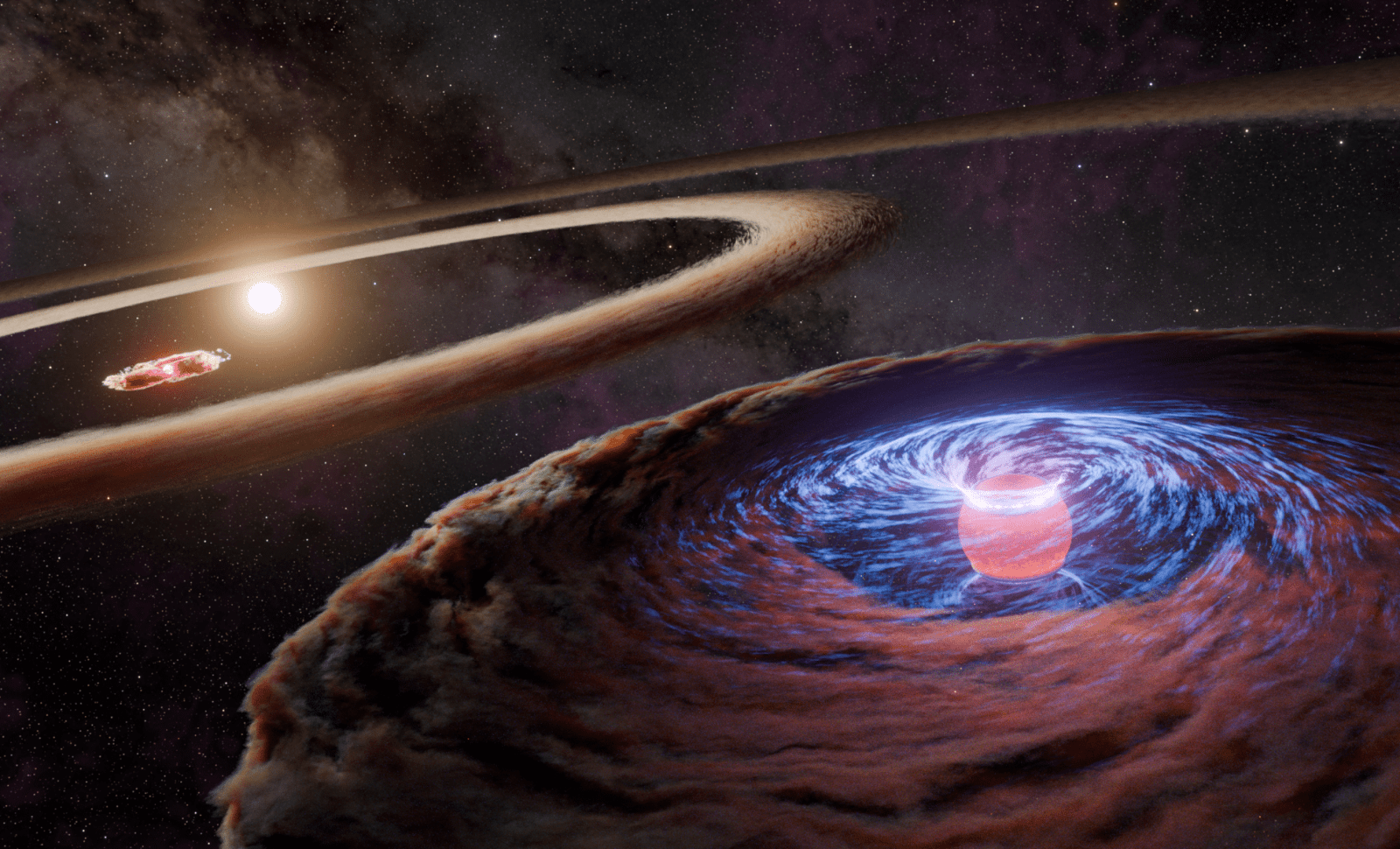The process of planet formation has long been a mystery to astronomers, and despite years of theoretical research, capturing the birth of a planet has proven elusive. However, a new breakthrough has emerged that could change everything. Researchers recently photographed a “baby planet,” WISPIT 2b, nestled in a gap within a protoplanetary disk surrounding a young star, WISPIT 2. This discovery was not only the first of its kind but also validates a long-standing theory about the role of gaps in protoplanetary disks in planet formation, a concept also discussed in a recent study published in the Astrophysical Journal Letters.
A Baby Planet in a Ring: The Discovery of WISPIT 2b
In a remarkable achievement, astronomers have captured a direct image of a planet in its formative stages. This young protoplanet, named WISPIT 2b, lies in the gap of a dust and gas disk around its parent star, WISPIT 2, located 437 light-years from Earth. WISPIT 2b is a gas giant with a mass about five times that of Jupiter, and at just 5 million years old, it is a mere infant in planetary terms. The discovery was made possible through advanced imaging technologies like the MagAO-X system, which allowed researchers to capture direct photographs of the planet’s faint emissions, including its H-alpha light, a signature of hydrogen gas falling onto the planet from the surrounding disk.
This marks the first time a planet has been directly observed in such a gap, providing groundbreaking evidence that growing planets are likely responsible for clearing material in these regions. The implications of this discovery stretch far beyond the particular case ofWISPIT 2b, offering new insight into how planets may form and evolve over time.
Protoplanetary Disks and the Birth of Planets
Protoplanetary disks are vast rings of gas, dust, and ice that surround young stars and serve as the birthplace for new planets. These disks, often millions of years old, are a crucial stage in the planetary formation process. As material in these disks coalesces, it can form planets, moons, and other celestial bodies. However, over time, gaps or empty spaces begin to appear in the disk, a phenomenon that has long puzzled scientists.
The theory has always been that these gaps are created by the very planets forming within them. As a planet grows, its gravity pulls dust and gas away, clearing a path and creating a visible ring. WISPIT 2b is the first confirmed case where a planet has been directly observed inside one of these gaps. This confirms a key hypothesis in planetary science and shows that young planets might be far more responsible for shaping their environments than previously thought.

The Role of Gaps in Protoplanetary Disks
The discovery of WISPIT 2b offers a wealth of new questions regarding the interaction between forming planets and their surrounding disks. The ring gaps observed in many protoplanetary disks have been a subject of debate for decades. While it has been theorized that planets form within these gaps, no direct evidence has existed until now. This study not only validates that theory but also provides valuable insight into how these planets might shape their surrounding environments.
In this case, WISPIT 2b’s presence in the gap shows that it may have formed right in the region where the gap is located, rather than migrating there after formation. This observation could change the way astronomers think about planetary migration and the timing of planet formation in young star systems. Understanding the exact mechanisms behind gap formation and how it interacts with growing planets will be essential for future research into planetary system evolution.
The Technological Breakthrough Behind the Discovery
One of the most exciting aspects of the WISPIT 2b discovery is the technology used to capture it. The team employed the MagAO-X system, a cutting-edge imaging tool designed for high-contrast observations. This system allowed astronomers to isolate the faint emissions from WISPIT 2b, despite the overwhelming brightness of the parent star. The use of H-alpha light, emitted by hot hydrogen gas falling onto the protoplanet, was another innovative aspect of the study. By analyzing this light, scientists were able to directly observe the planet’s activity in its nascent stages.
Additionally, the team used theLMIRcam detector to study the planet in infrared light, offering further confirmation of the planet’s existence and its position within the gap. These sophisticated instruments are key to future planetary discoveries, allowing astronomers to peer deeper into distant star systems and capture unprecedented images of planets still in formation.
WISPIT 2b: A Key Piece in the Puzzle of Planet Formation
WISPIT 2b’s discovery provides more than just a photo of a new planet; it offers a glimpse into the broader process of planetary system evolution. With direct evidence of a growing planet in a gap within a protoplanetary disk, scientists now have a new benchmark for studying how planets form, interact with their environments, and potentially migrate within their disks. Furthermore, the planet’s formation within the gap suggests that such planets might play a much larger role in shaping the dynamics of their parent star systems than previously thought.
As astronomers continue to explore the WISPIT 2 system, the data from WISPIT 2b will likely reveal even more about the early stages of planetary formation. Future observations of the system may uncover more planets and provide additional insights into the nature of planetary growth and system evolution.
Enjoyed this article? Subscribe to our free newsletter for engaging stories, exclusive content, and the latest news.












